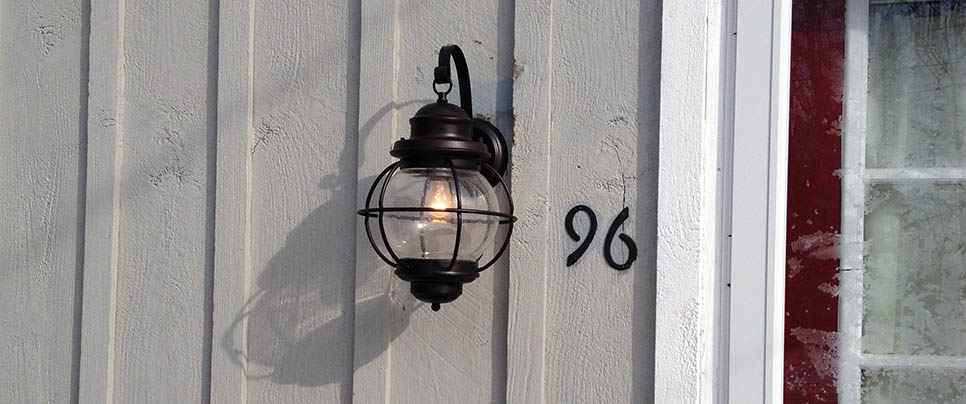I belong to a group forum filled with other architects. We bounce ideas, products, and share knowledge. One of the questions posted this week had to do with vapor barriers and insulation systems. Then, a few days later, I met up with another energy professional and we had a discussion about vapor barriers and wall systems. It made me think: Do owners, architects and builders know about moisture in their homes?It is important to understand moisture because trapped moisture can lead to mold, rot, and structural issues. All parts of your home "house as a system" must work together to keep moisture from causing damage and health hazards to the occupants, not to mention the fact that wet insulation just does not work. So let's talk about science.
First, where does the moisture come from? It has became clear after talking to some builders, owners, and architects, that many people don't know where the moisture comes from to begin with.Construction materials, up to 40 quarts of water a day for the first year after new construction. You may have heard that your house will dry out for a year or two after construction. But most people don't even seem to know that.Damp basements and crawl spaces without vapor barriers, 25 quarts a day. This one really irks me! Basements and crawl spaces are an integral part of a home. Not only are they the sturdy foundation upon which our house stands, but they can also be the leading causes of moisture and energy loss.Humidifyers: 20 quarts a day. In cold climates where the air leaking into the home has very little moisture in the winter time, many people use humidifiers. This often exasperates health issues related to moisture trapped in homes that are closed up tight for the winter.Drying firewood indoors: 16 quarts a day. Two things to mention here, 1. firewood drying out in your basement lets that moisture go somewhere, so now you need to control another moisture source. But firewood can often come with bugs, and what are most houses made of? Wood? I think you're getting the idea. So store it outside, under cover, at least a foot or two away from the structure of your home.Unvented clothes dryers: 13 quarts a day. Plain and simple, this is a health hazard. People tell me they do this to recapture the heat that the dryer is producing. What they fail to consider is the moisture causes much more damage then the small amount of heat that is reclaimed and the heated byproducts of laundry detergents and softness are toxic.Breathing: (Family of 4): 4.7 quarts of water a day. Breath on your hands. They got a little damp right? Right. So every time you exhale, out comes water vapor. So where should we provide fresh air in a home? The bedroom, because most people work outside the home, they spend the majority of their time at home (8-hours) sleeping in a room with the door closed and the heat turned down. Since the room is cool, it can't hold as much water and condensation begins to show up on the cold surfaces.Cooking, dishwashing, house plants 0.5-1 quart a day. Plants put more than 90% of the water you supply them back into the air. I'm not going to tell you not to have house plants, they have other benefits, but maybe we shouldn't live in a greenhouse and in the winter time, pull the plants away from the windows where they deposit their moisture as condensation onto the cold surfaces.Now that we have an idea of where this water might be coming from, how is it moving?If a builder and/or architect understand the way water vapor moves and knows what climate zone the house is located, then we can come up with a solution on how to control the moisture. There are ways to control vapor diffusion that are ineffective at controlling air-transported moisture and the same is true in reverse. An effectively built home is designed to control both vapor diffusion and air transportation. And it's important to know what climate zone you live in to understand where that moisture is coming from. (Outside in hot/wet and Inside in Cold).Vapor diffusion is the how moisture moves through a material because of a difference in pressure or a difference in temperature. Vapor diffusion is not air movement. Vapor diffusion is water vapor moving through a material from a high pressure to a low pressure, or a warm side of a wall to a cool side of the wall. Diffusion through materials is a slower then vapor moving through air transportation. Most common building materials slow moisture diffusion, but do not stop it completely. For this reason, we often use vapor barriers with low perm ratings to help slow down diffusion. For example, 6-mil poly under a concrete slab to prevent ground moisture from diffusing quickly through the concrete slab.Air Transportation: Air can move and flow quickly and in large volumes. Air transportation accounts for more than 98% of all water vapor movement in building cavities. Air naturally moves from a high-pressure area to a lower one by the easiest path possible. Significantly more water vapor travels through a wall by air leakage than by diffusion. This is also part of the reason why we hate fiberglass insulation. Different insulation systems will reduce airflow and fiberglass is not one of them. At the same time, spray foams and rigid insulation have lower permeability and can inadvertently create a vapor barrier in a wall system where you didn't intend for it to be.Now we know where the moisture might be coming from and how it's moving about in our home. But maybe we still don't understand why it's a problem. So let's take a minute and talk about Relative Humidity. I know, I'm using all those science words that you thought you left behind in high school. But it's important in our homes to know at what temperature and moisture concentration water vapor begins to condense. This is called the "dew point." As air warms, it can hold more water vapor. As the air cools, it can no longer hold as much water and it condenses on the first cold surface it encounters. If this surface is within an exterior wall cavity, wet building materials will be the result. And we do NOT want that. Where you are more likely to have seen it is on a window in the winter time. As the moist/warm interior air hits the cold window surface it deposits the moisture it can no longer hold on the window and you see beads of condensation. This same thing could be happening in your wall system and you don't even know it. That's why it's important to understand how that moisture is getting out and that we are not creating a surface within our walls for it to condense and create an issue. And adding more insulation isn't always the best solution. In some cases it can cure a problem, or it might cause one. When a wall is insulated, the temperature inside that wall is changed. A surface inside that wall, such as concrete blocks that were insulated on the interior, can become much colder in the wintertime than it was before the wall was insulated. This cold surface could be the place where moisture traveling through wall condenses and causes trouble like freeze thaw.
So what should you do? First, understand that a vapor barrier, air barrier, and weather resistive barrier are not the same thing. The vapor barrier debate has been an on-going energy and building conversation for years. But whether you are pro vapor barrier or not, what you need to know is that you WILL have water in your home and in your wall system and you need to know how it's getting out.In an ideal world we keep what's outside, outside. Install a weather resistive barrier to prevent the water from getting in from the outside. Water coming into the house, even if it is a small leak, must be controlled. This is where we talk about weather resistant barriers which should be vapor open to let moisture in the wall out, but they should stop weather related moisture form getting in. Proper flashing at openings, rain screens, gutters and other moisture control systems on the exterior of the building should be used to control where exterior moisture goes in relation to the house. All of these things are critical and important.Air Seal. It is important to that the air leakage pathways between the living spaces of the house and other parts of the building are stopped. Air leakage into a wall or the attic can carry significant amounts of moisture. If there is air leaking around electrical, plumbing, and ventilation penetrations, moisture will be carried along with it. Ductwork needs to be sealed and insulated, especially if the ducts pass through an unconditioned crawlspaces or basement or unheated attics. Air sealing is critical.Then we design a wall system to provide a path for moisture to escape. A wall system should be designed to allow moisture to escape from a wall cavity to the exterior to dry during the winter. Or a wall can dry to the indoors by avoiding the use of vinyl wall coverings or low-perm paint. Your WRB is letting the moisture out in a one way vapor open scenario, your thermal and air barriers are in line and fully touching, and your vapor barrier, if you have one, is on the warm side and not in line with the dew point of the wall.Ventilate. The home needs to be ventilated. Your WILL generate moisture inside your home. Where does it come from? Cooking, shower, laundry, houseplants and even breathing, you saw the list above. This water vapor can add 5 to 15 gallons of water per day to the air inside your home. The tighter we build our homes to prevent air transported moisture migration or heat loss, the more conscientious we need to be about ventilation on the inside to provide healthy indoor air quality and reduce durability issues related to moisture trapped within the home. However, the use of mechanical ventilation can create a pressure difference and drive both air infiltration and vapor diffusion. So it's very important how you ventilate and that you don't over ventilate.
In conclusion, moisture is a major factor in building. We need to know where it's coming from and how it's moving through the spaces. It's not as simple as it seems. As new products come on to the market and the ways we build change, it's very critical that we understand how to prevent health, safety, and durability issues.




